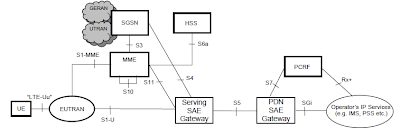LTE NETWORK ARCHITECTURE OVERVIEW
The Long-Term Evolution (LTE) network architecture is a crucial component of modern wireless communication systems. In this overview, we will delve into the key aspects of LTE network architecture, including its structure, nodes, and functionalities.

ENodeB: The Radio Access Node
At the heart of the LTE network is the ENodeB (eNB), which serves as the radio access node. This node is responsible for a multitude of functions, making it a critical component of LTE communication.
Radio Access and Control
The primary responsibility of the ENodeB is to handle all radio access and control functions. This includes:
- Radio Resource Management (RRM): ENodeB manages radio resources efficiently, ensuring optimal connectivity and bandwidth allocation to User Equipment (UE).
- Radio Bearers: It establishes and maintains radio bearers, which are logical channels for communication between the UE and the ENodeB.
- Mobility Management: ENodeB manages handovers and mobility of UEs within its coverage area, ensuring seamless connectivity even during movement.
Evolved Packet Core (EPC): The Core Network
While the ENodeB deals with the radio access, the core network, known as the Evolved Packet Core (EPC), handles the core functionalities of LTE.
Mobility Management Entity (MME)
The equivalent of the UMTS SGSN in LTE is the Mobility Management Entity (MME). MME is a crucial element in LTE network architecture responsible for control functions.
Control Functions
MME’s control functions include:
- Bearer Management: It manages the establishment, modification, and release of bearers for UEs.
- Security: MME plays a significant role in ensuring the security of communication by authenticating UEs and managing encryption.
- Tracking Area Management: MME keeps track of UEs’ locations and manages tracking area updates, enabling efficient handovers.
Serving SAE GW (eAG)
The Serving SAE Gateway (eAG) is another core network element that complements the MME. eAG’s primary responsibility is handling the user plane (U plane) traffic.
User Plane Handling
The key functions of eAG in the user plane include:
- Data Routing: eAG routes user data to and from the appropriate destination, ensuring efficient data transmission.
- QoS Management: It manages Quality of Service (QoS) parameters, ensuring that different types of traffic receive the appropriate level of service.
- Charging: eAG plays a role in tracking data usage for billing and accounting purposes.
PDN SAE GW (P-GW)
In LTE network architecture, the PDN SAE Gateway (P-GW) takes on the role of the UMTS GGSN equivalent. The P-GW may or may not be collocated with the Serving SAE GW (eAG).
Inter-System Anchor Point
P-GW serves as the inter-system anchor point for each UE. Its primary functions include:
- Access to PDNs: P-GW provides access to Packet Data Networks (PDNs), enabling UEs to connect to external networks and the internet.
- IP Address Allocation: It allocates IP addresses to UEs, ensuring that they can communicate over the LTE network.
- Policy Enforcement: P-GW enforces policies related to data traffic, including filtering and Quality of Service (QoS) enforcement.
In summary, the LTE network architecture is designed with efficiency and flexibility in mind. The ENodeB handles radio access and control functions, while the core network (EPC) includes critical elements like MME, eAG, and P-GW, each with its specific responsibilities.
This well-structured architecture ensures that LTE networks can deliver high-speed data, low latency, and seamless mobility, making them the foundation for modern wireless communication. Understanding these key components is essential for anyone involved in the design, deployment, or maintenance of LTE networks.